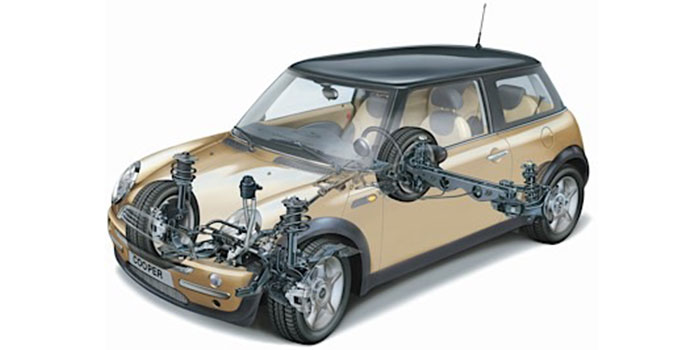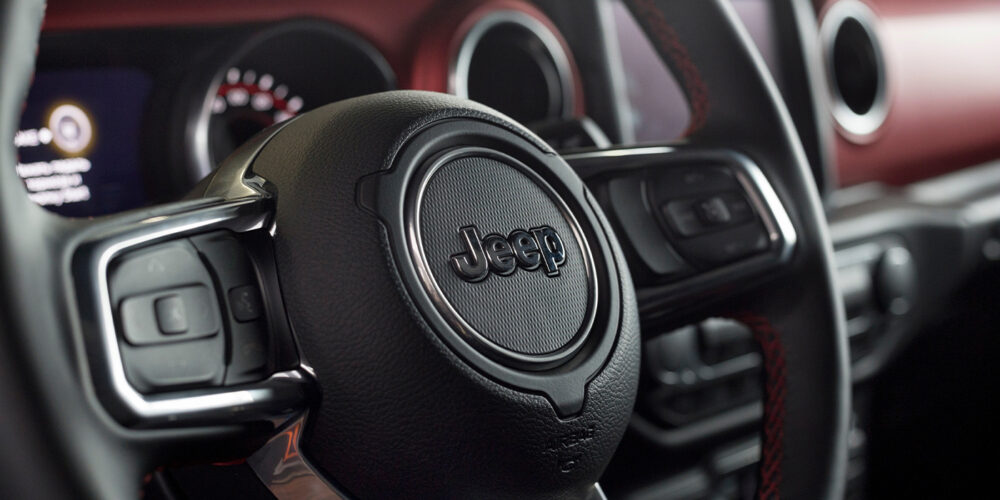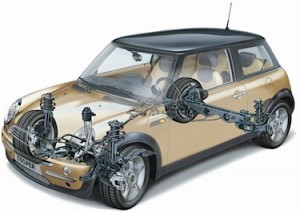 First- and second-generation Mini Coopers are not a difficult car to align. 2002-2006 models are designated R50 models, and 2007-2013 models are R56 models. The convertible is called a R52, the Clubman is a R55, and the first-generation S-Models are R53s.
First- and second-generation Mini Coopers are not a difficult car to align. 2002-2006 models are designated R50 models, and 2007-2013 models are R56 models. The convertible is called a R52, the Clubman is a R55, and the first-generation S-Models are R53s.
The 2002-2013 models had a conventional strut front suspension. In 2007, BMW redesigned the Mini to make it bigger and improve the geometry of the rear suspension so it could accommodate a differential and axles for an all-wheel-drive system.
In 2015, Mini did recall certain 2002-2005 models for problems with the electro power steering pump. The problems caused the steering system to lose assist and made the car difficult to steer. Other than that, there has not been any significant alignment-related recalls or TSBs.
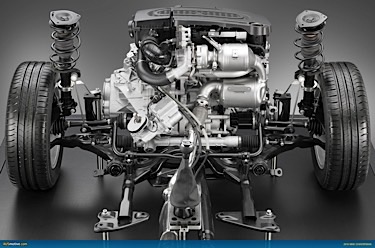 The Mini uses four hydraulic bushings. In the front, the hydraulic bushing is located at the rear of the control arms. In the rear, the hydraulic bushing mounts the trailing arm to the body. These mounts can leak when they fail. The camber and toe will change when the bushings go soft. BMW recommends replacing the bushings in pairs.
The Mini uses four hydraulic bushings. In the front, the hydraulic bushing is located at the rear of the control arms. In the rear, the hydraulic bushing mounts the trailing arm to the body. These mounts can leak when they fail. The camber and toe will change when the bushings go soft. BMW recommends replacing the bushings in pairs.
BMW has very specific alignment procedures when it comes to vehicle weight. BMW recommends that approximately 150 lbs. be placed in the front seats and that the gas tank is full. If you are struggling with a difficult customer or tire wear problem, it might be beneficial to place a person in the driver’s seat.
The biggest issue with 2002-2006 models is inside edge wear on 2002-2006 models. This is normal, and the only way to get the most out of the tires is to rotate them every 3,000 miles. Also, wear on the rear trailing arm bushing can accelerate wear.
Front Suspension
On 2002-2006 models, there are no built-in factory adjustments for front camber or caster. The only way to adjust these angles is to purchase adjustable upper strut mounts. These kits can typically adjust camber by ±2.00º and caster by ±0.75º. 2007-2013 models have some degree of camber adjustment built into the upper strut mount with elongated holes. If the camber is out significantly, check for control arm damage or a bent strut rod.
On Minis with electronic stability control (ESC or DSC), reprogramming the steering position sensor requires an enhanced or factory scan tool
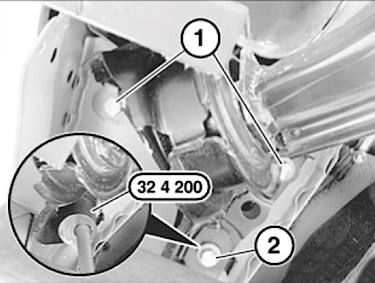 Rear Suspension
Rear Suspension
On 2002-2006 models, rear toe is adjusted by an eccentric bolt and plate that secures the lower transverse link to the trailing arm. The rear toe and camber angles on the Mini have a considerable amount of cross-talk. If the rear camber is in spec but at the fringes, a toe adjustment could push it over the edge. Also, check ride height before doing a drastic adjustment.
On 2007-2013 models, rear toe is adjusted by changing the position of the trailing arm mounting bracket on the unibody. The procedure involves loosening the bolts 1.5 turns and moving the bracket with a special tool that has an eccentric cam that fits into a hole and can move the bracket small amounts.
Rear Camber
On 2002-2006 models, the rear camber is not adjustable. If the rear camber needs to be adjusted, it requires replacement of the lower control link with an adjustable part. 2007-2013 models have a rear camber adjustment on the lower control arm.
Courtesy Brake & Front End.

